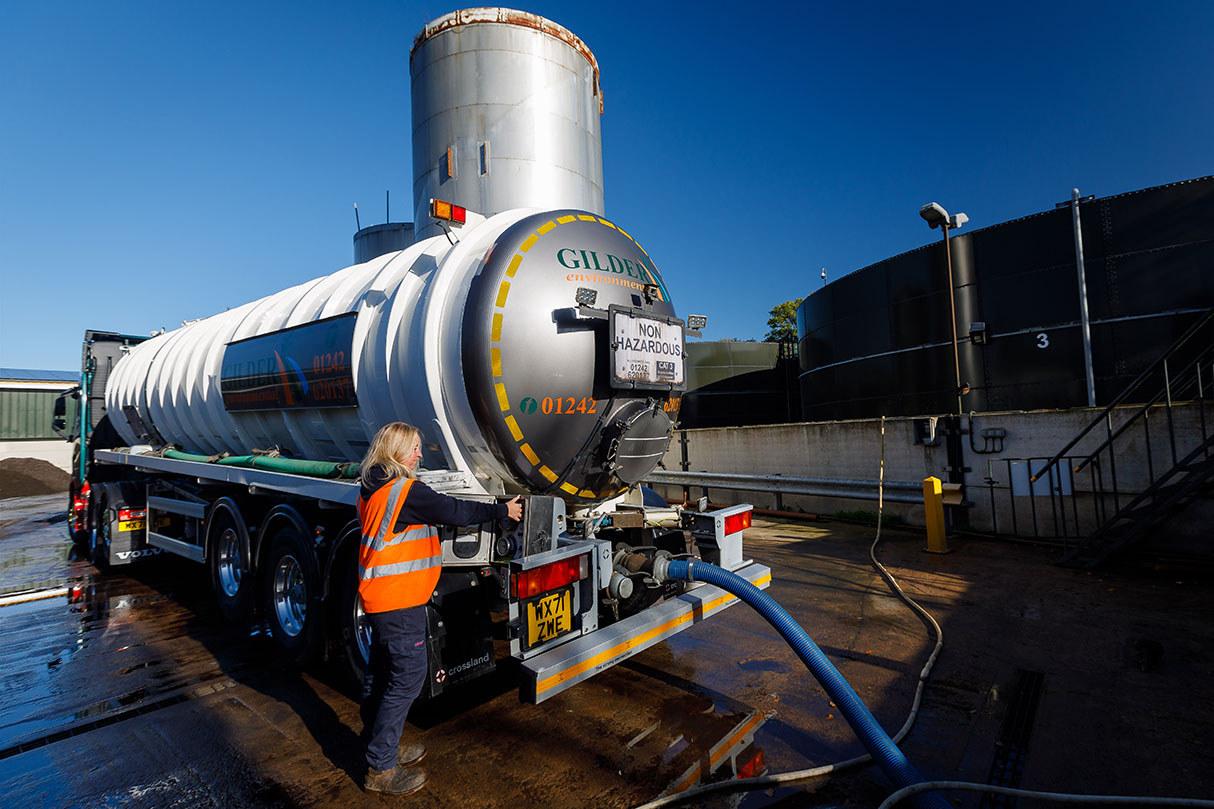Cutting-edge Industrial Wastewater Treatment Solutions: Securing the Atmosphere
Cutting-edge Industrial Wastewater Treatment Solutions: Securing the Atmosphere
Blog Article
Recognizing the Comprehensive Process of Liquid Garbage Disposal: Finest Practices and Environmental Effect Considerations
The management of liquid waste disposal is a complex concern that calls for a complete understanding of numerous ideal practices and their linked environmental effects. From the sorts of fluid waste produced to the techniques used for collection, treatment, and final disposal, each step plays a vital function in guarding ecosystems and public health. As governing standards advance and modern technology advances, the conversation around these procedures comes to be significantly significant. What ramifications do these modifications hold for future sustainability initiatives, and exactly how can stakeholders make sure that they are appropriately attended to?
Kinds Of Liquid Waste
Recognizing the different kinds of fluid waste is vital for reliable monitoring and disposal methods. Liquid waste can be generally classified into numerous types, each requiring one-of-a-kind handling and therapy approaches.
Industrial liquid waste commonly has hazardous materials, consisting of hefty steels, solvents, and chemicals, generated throughout making processes. These wastes demand strict governing conformity to shield human health and the setting. Domestic fluid waste primarily describes wastewater produced from houses, consisting of sewage and greywater, which, although much less poisonous, can still present substantial threats if incorrectly handled.
Agricultural liquid waste, including drainage from farms, frequently has fertilizers and chemicals that can cause environmental degradation otherwise treated appropriately. Clinical liquid waste, generated from health care facilities, consists of infected liquids such as bodily fluids and chemicals, requiring specialized disposal methods to prevent infection and environmental contamination.
Lastly, oil and oil waste, typically generated by dining establishments and automotive sectors, can create extreme clogs in sewer systems otherwise handled correctly. Recognizing these classifications promotes targeted techniques for therapy, conformity with regulations, and reliable disposal approaches, inevitably advertising ecological sustainability and public health and wellness security.

Collection Approaches
Effective collection methods are critical for the correct monitoring of liquid waste, ensuring that it is gathered securely and efficiently prior to treatment or disposal. Various strategies are employed relying on the sort of fluid waste produced, the quantity, and the certain attributes of the waste.
One usual technique is making use of specialized collection storage tanks or sumps, which are developed to capture liquid waste at the resource. These systems often integrate pumps that facilitate the transfer of waste to larger storage space containers or treatment facilities. Furthermore, mobile collection units geared up with vacuum innovation are employed in circumstances where waste is generated periodically or in hard-to-reach locations.
For commercial settings, closed-loop systems can efficiently lessen spills and leakages, permitting the healing and reuse of liquid waste. It is also important to educate personnel on proper collection methods to alleviate threats connected with harmful materials.
Additionally, implementing normal upkeep routines for collection tools ensures optimum efficiency and security. The combination of advanced monitoring systems can enhance collection performance by providing real-time data on waste levels and potential threats. On the whole, efficient collection approaches are foundational to sustainable fluid waste management methods.
Therapy Processes
Therapy processes play an essential function in the administration of liquid waste, changing possibly unsafe products into multiple-use sources or safe effluents - liquid waste disposal. These processes can be generally categorized into physical, chemical, and biological techniques, each tailored to address details contaminants present in the waste stream
Physical treatment approaches, such as sedimentation and purification, work by removing suspended solids and particulate issue. These techniques are commonly the very first action in the therapy chain, successfully lowering the load on succeeding processes. Chemical therapies entail making use of reagents to neutralize damaging substances, speed up hefty metals, or oxidize natural toxins, consequently enhancing the security of the effluent.
Organic treatment procedures, consisting of triggered sludge systems and anaerobic food digestion, profit from the all-natural capabilities of microorganisms to weaken raw material. These methods are specifically effective for wastewater including biodegradable pollutants. Advanced therapy technologies, such as membrane layer filtration and index advanced oxidation procedures, are progressively employed to achieve greater degrees of filtration.
Integrating a mix of these therapy techniques not only ensures compliance with regulatory requirements however likewise advertises ecological sustainability by recovering useful resources from liquid waste.
Disposal Options
Just how can companies make sure the secure and liable disposal of liquid waste? Effective disposal choices are critical for securing public health and the setting. The useful reference primary techniques consist of land incineration, therapy, and disposal complied with by discharge into municipal wastewater systems.
Land disposal entails the mindful control of liquid waste in marked garbage dumps, guaranteeing that it does not leach into surrounding soil or water. Incineration, on the various other hand, topics liquid waste to heats, converting it right into ash and gases, which need correct filtering to minimize discharges. This approach appropriates for dangerous wastes that can not be treated through traditional means.
In situations where fluid waste can be dealt with, companies might choose biological or chemical treatment processes to counteract damaging elements prior to discharging the treated effluent right into municipal systems. This route normally lines up with regulatory demands, ensuring that the effluent meets safety and security standards.
Inevitably, companies must carry out complete evaluations of each disposal option to establish its feasibility, taking look at this website into consideration aspects such as waste composition, regulatory conformity, and potential risks to health and wellness and the setting. By picking ideal disposal techniques, services can contribute to a liable waste monitoring approach.
Environmental Impact
The environmental impact of fluid waste disposal is a critical consideration for companies looking for to lessen their eco-friendly footprint. In addition, the discharge of unattended or inadequately dealt with waste into surface area waters can result in eutrophication, leading to oxygen deficiency and the succeeding fatality of fish and various other microorganisms.

To minimize these influences, companies have to embrace ideal techniques such as executing extensive waste therapy processes, advertising recycling and reuse, and sticking to regulatory requirements. By taking an aggressive approach to fluid waste administration, entities can dramatically minimize their ecological footprint while supporting sustainable growth goals. Ultimately, a detailed understanding of the environmental influences related to fluid garbage disposal is essential for educated decision-making and accountable stewardship of natural deposits.
Conclusion
Efficient monitoring of liquid waste is vital for protecting ecological stability and public health and wellness. By embracing ideal techniques in disposal, collection, and treatment, alongside adherence to governing requirements, the possibility for dangerous contamination of ecosystems can be substantially reduced. Continual innovations in technology and procedures add to lasting waste monitoring initiatives. Inevitably, an extensive understanding of liquid garbage disposal not just minimizes environmental impacts yet additionally cultivates a commitment to liable source management and ecological stewardship.
The monitoring of liquid waste disposal is a multifaceted problem that requires a comprehensive understanding of various best techniques and their linked ecological influences. From the kinds of fluid waste generated to the methods employed for collection, therapy, and final disposal, each step plays a vital role in securing ecosystems and public health and wellness.The environmental impact of fluid waste disposal is a critical factor to consider for organizations seeking to reduce their eco-friendly footprint. Inevitably, an extensive understanding of the ecological impacts connected with fluid waste disposal is important for educated decision-making and liable stewardship of natural resources.
Eventually, an extensive understanding of liquid waste disposal not only minimizes ecological influences yet likewise fosters a commitment to accountable resource monitoring and environmental stewardship.
Report this page